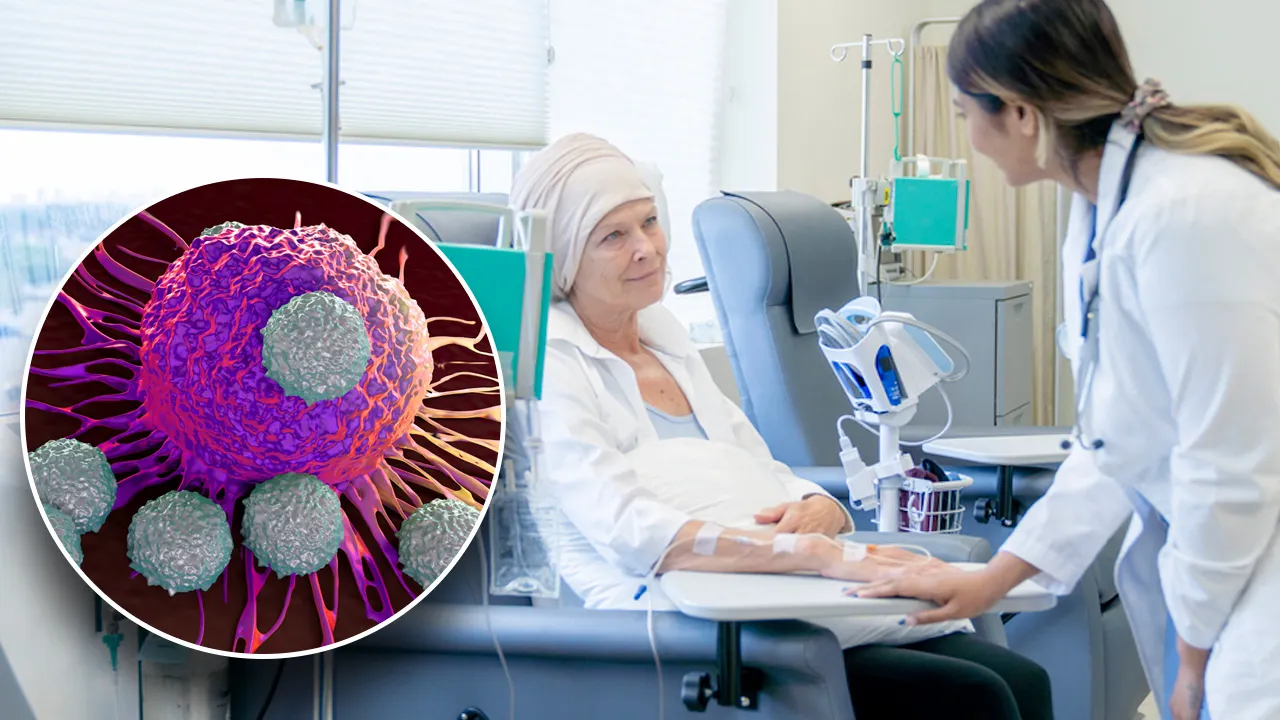Nanoparticles for Cancer Therapy: Current Progress and Challenges
sweety February 12, 2024 0 COMMENTS
Nanoparticles are too tiny to be seen by the human eye and their size ranges between 1 to 100 NM. They exhibit substantially different chemical and physical properties to their larger material equivalents. Because of their very small size, they have a very large surface area to volume ratio when compared with bulky materials like powders, sheets and plates.
Nanoparticles can be naturally on earth and can be developed as the by-products of combustion reactions or can be created through engineering purposefully to perform a specialized function.
It can generate materials in a very particular way to play a specialized role making itself an important aspect across a variety of industries spanning from healthcare and cosmetics to air purification and environment preservation. To know the advantages of Nanoparticles and the effectiveness of nanoparticles in cancer treatment keep reading this article.
Table of Contents
Nanoparticles: Chance to win over cancer?
Cancer or tumours are known to be treated using a standard therapeutic protocol which consists of a combination of surgery, chemotherapy, and radiation therapy. Though they are used to treat cancerous cells, they possess severe toxic side effects and have limited adequacy because of cancer cell resistance mechanisms resulting in major limitations of these treatments.
To deal with the drawbacks of the anti-cancer therapies various scientific researches are being focused on developing new therapeutic approaches that can help serve cancer patients and can remarkably improve efficacy while reducing the side effects.
New treatments like immunotherapy, gene therapy, monoclonal antibodies, and photodynamic therapy have proved to treat cancer but these treatments also have drawbacks. Just like the other treatments these new treatments also lead to cancer resistance and therapy-related toxicity.
Magnetic Nanoparticles
Magnetic nanoparticles are tiny particles that exhibit a strong magnetic sensitivity which allows them to be controlled and aligned by an external magnetic field. They are usually generated from pure metals like Iron, Cobalt and Nickel or an amalgam of all. The purpose of using magnetic nanoparticles is that they are biocompatible, highly stable in aqueous solution and non-toxic. The most widely used inorganic nanoparticle is iron oxide which is known to have several applications in diagnostic and therapeutic settings.
MNPs in Cancer imaging
MRI, Magnetic Resonance imaging is a technique which is used for tumour detection. This technique is safe and painless and uses radio frequencies to create images of internal issues in organs from various angles. In MRI, images are generated through nuclear magnetic resonance signals within the sample. When a radio frequency current flows through the patient the protons get excited and start fighting against the magnetic field. When the radio frequency is turned off protons realign themselves with the magnetic field. During this process, a certain amount of energy is released which is recorded by the MRI sensors. The time of realignment of the proton with the magnetic field and the volume of energy released can vary according to the biological and chemical features of the tissue. MRI sensors produce these differences in images.
MNP-mediated hyperthermia for cancer therapy
Magnetic hyperthermia uses magnetic nanoparticles for cancer therapy. It is used to raise the temperature within the cancerous tissues to destroy the tumour and also enhance their perceptivity to chemotherapy and radiation. The primary material that is used to generate hyperthermia is magnetite with the particle size ranging between 10 to 100 nm. Once the MNPs are administered and they reach the tumour, the surface-bound targeting ligands increase the association and absorption of NPs by the cancerous cells. The application of external alternating magnetic fields creates rapid oscillation by MNPs, producing heat. The heat produced is enough to kill the cancer cells thereby reducing the size of the tumor.
Nanomedicine
This is a field of medicine that involves the use of nanoparticles (tiny particles) to diagnose and treat diseases. This medicinal science has a history dated back to 1959 when physicist Richard Feynman introduced the concept of nanotechnology. During the 1990s nanotechnology found its application in the medical field as nanomedicine for the first time. With time the science of nanomedicine has expanded and now includes the development of diagnostic tools and imagining techniques. They actually help to detect diseases at the earliest phase and monitor their progression more precisely. With advancement, nanomedicine helps transform healthcare using nanoparticles to provide an accurate and more targeted therapy.
Nanoparticles for cancer therapy
Nanomedicines have helped treat many diseases and proved helpful in treating different types of cancer. Nanoparticles are used to provide treatment to cancer cells through chemotherapy drugs without hampering the healthy growing cells. Nanoparticles for cancer treatment are as follows:
1. Nab-paclitaxel
This one is the nanoparticle solution for the paclitaxel, a chemotherapy drug. Compared to traditional paclitaxel drugs this one doesn’t require any toxic solvent and works effectively on the target tissue. Once this nanoparticle is administered into the body it dissociates into individual nanoparticles. After breaking down into individual NP these single albumin-paclitaxel nanoparticles bind to the albumin receptors on the endothelial cells of the tumor. This albumin coating provides stability and circulation of the drug in the body.
2. PEGylated Liposomal Doxorubicin
This nanoparticle is used to treat ovarian cancer and multiple myeloma. The size of these 100 nm liposomes makes them impermeable to the normal tissues so they only get adhered to the tumor microenvironment. Through this PEG coating the drug does not degrade soon and increases its half-life.
Advantages of Nanoparticles in cancer treatment
There are several advantages of nanoparticles over traditional for choosing to treat cancer, including:
1. Targeted Drug Delivery
The main reason for using nanoparticles for cancer therapy is their property to target specific cells in the body. In comparison to traditional non-targeted drugs, these produce fewer side effects because they target the affected area while the traditional drugs are distributed throughout the body leading to side effects. This is the reason that makes nanomedicine using nanoparticles more effective and less toxic.
2. Enhanced solubility
Some drugs possess limited solubility in water, reducing their efficacy. On the other hand, nanoparticles can increase the solubility of those drugs making the drug more efficient and potent.
3. Longer and Faster Half-Life
By the term half-life of a drug, we mean the amount of time required by the body to eliminate half of the drug. Small molecule drugs have shorter half-lives urging the patient to ingest the drug frequently to maintain the optimum level of drug in the body. Nanomedicines have longer half-lives meaning they need to be taken less frequently.
Conclusion
Though magnetic nanoparticles are used to treat cancerous cells, they possess severe toxic side effects, restricted biocompatibility and have limited adequacy because of cancer cell resistance mechanisms resulting in major limitations of these treatments. Hence several other researches are also taking place to take these issues into account and come up with more successful approaches for diagnosis and therapy with nanoparticles for cancer therapy.
RELATED ARTICLES
Latest Articles
 Laura Ingraham Husband James Reyes: Why …In BiographyApril 17, 2025Laura Ingraham is a well-known conservative […]
Laura Ingraham Husband James Reyes: Why …In BiographyApril 17, 2025Laura Ingraham is a well-known conservative […] Zach Top Wife Mystery Solved! Meet the W…In BiographyApril 16, 2025Zach Top’s music has that classic country feel that […]
Zach Top Wife Mystery Solved! Meet the W…In BiographyApril 16, 2025Zach Top’s music has that classic country feel that […] What Is a Parcel Locker? The Game-Change…In TechnologyApril 16, 2025Missing packages? Porch pirates? Missed delivery slips […]
What Is a Parcel Locker? The Game-Change…In TechnologyApril 16, 2025Missing packages? Porch pirates? Missed delivery slips […] Dawn Staley Relationship Rumors: What’s …In BiographyApril 15, 2025When it comes to iconic figures in sports, Dawn Staley […]
Dawn Staley Relationship Rumors: What’s …In BiographyApril 15, 2025When it comes to iconic figures in sports, Dawn Staley […] How Window Tinting Affects Driver Visibi…In TechnologyApril 11, 2025Introduction: Beyond Style — The Functional Side of […]
How Window Tinting Affects Driver Visibi…In TechnologyApril 11, 2025Introduction: Beyond Style — The Functional Side of […] Vaishnav Tej Wife, Age, Family, Girlfrie…In BiographyApril 11, 2025Vaishnav Tej wife: There is always more to know about […]
Vaishnav Tej Wife, Age, Family, Girlfrie…In BiographyApril 11, 2025Vaishnav Tej wife: There is always more to know about […] Nick Sandmann Net Worth, Biography, Heig…In BiographyApril 11, 2025Young Nick Sandmann, catapulted into the media […]
Nick Sandmann Net Worth, Biography, Heig…In BiographyApril 11, 2025Young Nick Sandmann, catapulted into the media […] Cold War Timeline: The Real Story Behind…In HistoryApril 4, 2025If you’ve ever wondered how we ended up with the […]
Cold War Timeline: The Real Story Behind…In HistoryApril 4, 2025If you’ve ever wondered how we ended up with the […]
stopie.com is a participant in the Amazon Services LLC Associates Program, an affiliate advertising program designed to provide a means for sites to earn advertising fees by advertising and linking to Amazon.com.
Clicking on an Amazon link from stopie.com does not increase the cost of any item you purchase.
We will only ever link to Amazon products that we think our visitors may be interested in and appreciate learning more about.



